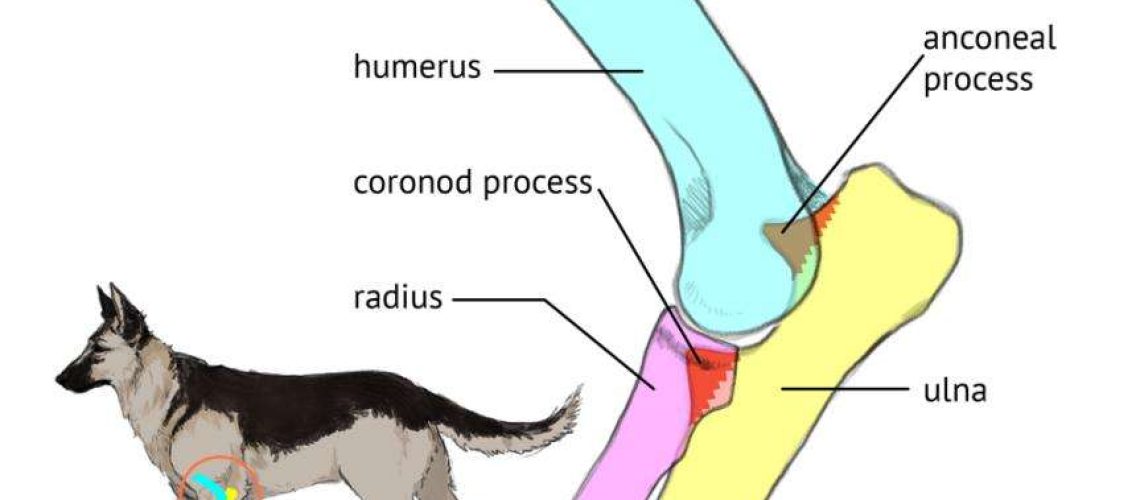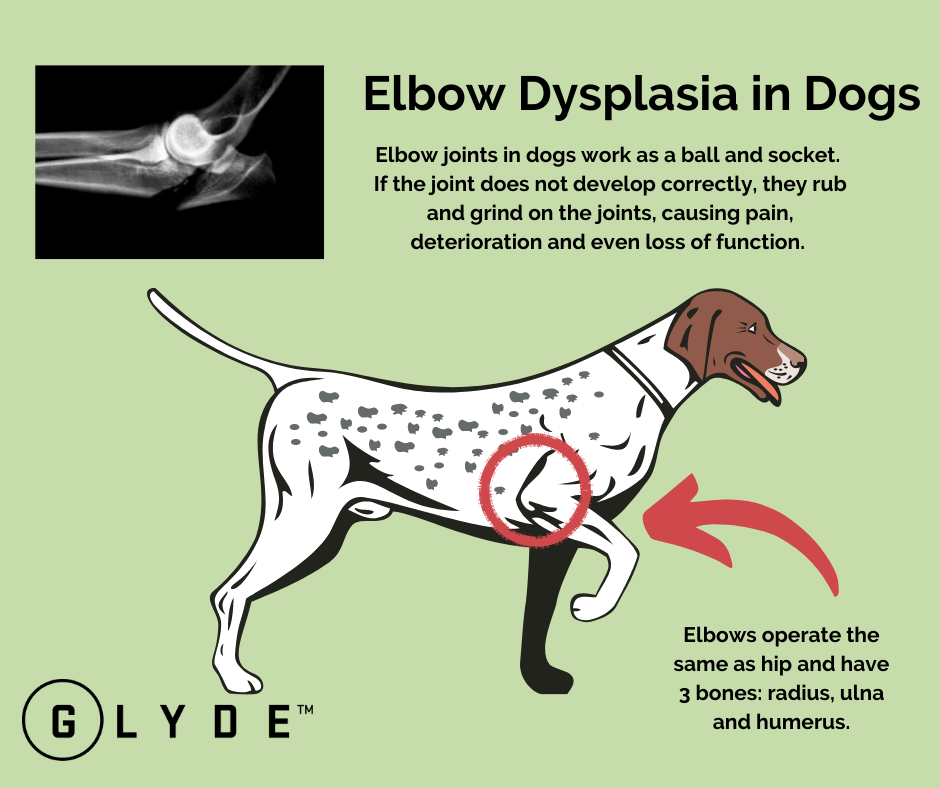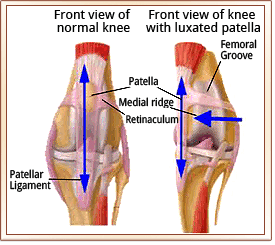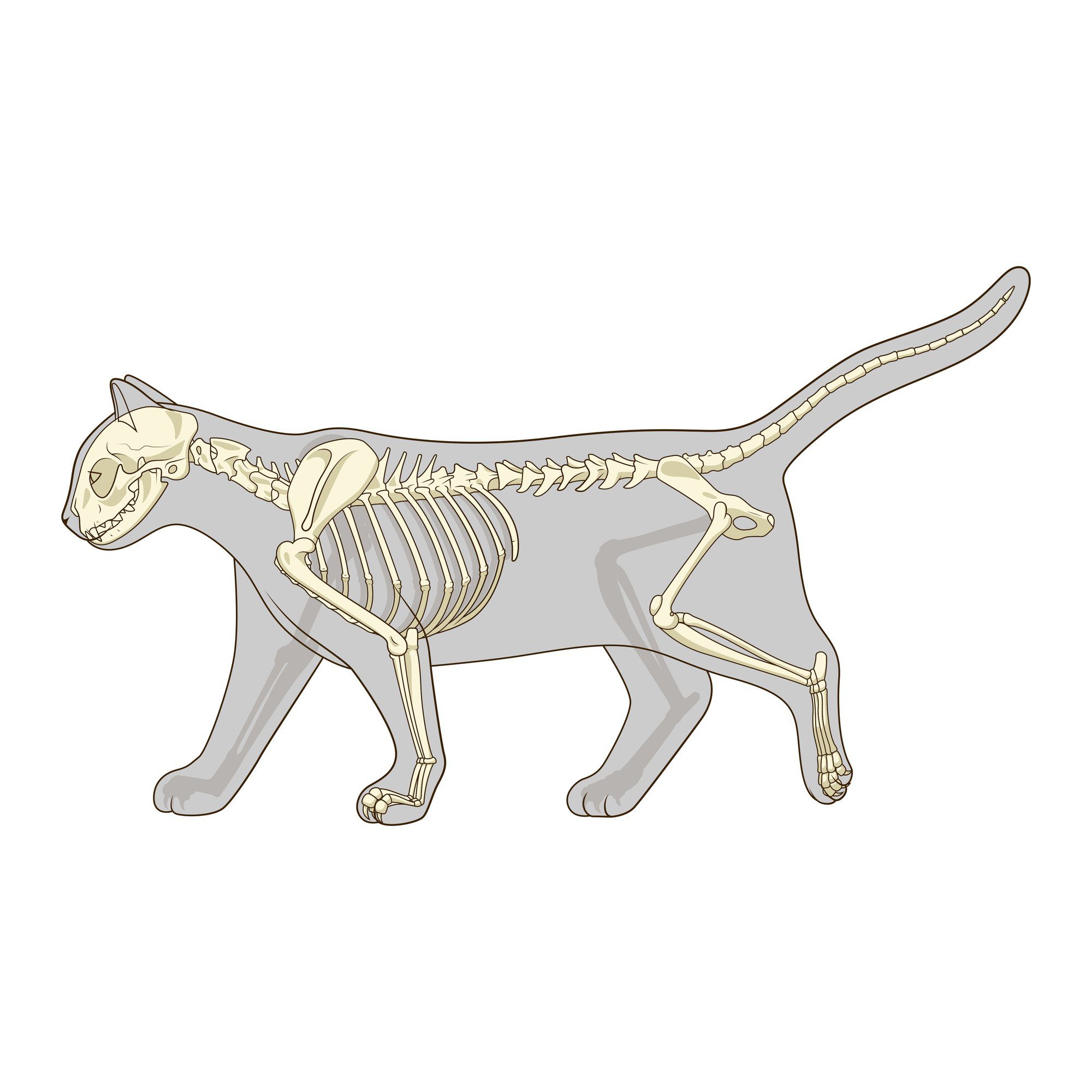Key Takeaways:
-
1. Elbow dysplasia is a common orthopedic condition in dogs that affects the elbow joint, causing pain and lameness.
2. It is typically seen in large and giant breed dogs, but can also occur in smaller breeds.
3. The condition is caused by a combination of genetic factors and environmental factors, such as rapid growth or excessive exercise during development.
4. Treatment options for elbow dysplasia may include medication, physical therapy, weight management, and in severe cases, surgery.
5. Early detection and intervention are crucial for managing elbow dysplasia and improving the long-term prognosis for affected dogs.
Are you a dog lover who wants to ensure the health and well-being of your furry friend? If so, understanding elbow dysplasia in dogs is crucial. This common joint disorder can cause pain and discomfort, hindering your pup's ability to run, jump, and play. By delving into this subject, you'll gain valuable knowledge that can help you identify early warning signs, seek appropriate treatment, and potentially prevent long-term damage. So let's dive into the world of elbow dysplasia in dogs and empower ourselves to be the best caregivers we can be!
Understanding Elbow Dysplasia in Dogs: A Concern for Their Health
Elbow dysplasia is a common condition that affects the elbows of dogs, causing pain and discomfort. It occurs when the bones in the elbow joint do not develop properly, leading to abnormal growth and wear on the joint. This condition can affect dogs of all ages and sizes, but it is more commonly seen in larger breeds.
When a dog has elbow dysplasia, they may experience symptoms such as lameness or limping, stiffness in the affected leg, swelling around the elbow joint, or difficulty getting up or down. It can be quite distressing for both the dog and their owner to see them in pain.
If left untreated, elbow dysplasia can lead to arthritis and other degenerative joint diseases. Therefore, it is important to seek veterinary care if you suspect your dog may have this condition. Early diagnosis and treatment can help manage the symptoms and improve your dog's quality of life.
How Elbow Dysplasia Develops in Dogs: Common Symptoms to Look Out For
Elbow dysplasia typically develops during a dog's growth phase when their bones are still developing. There are several factors that contribute to its development, including genetics, rapid growth rate, diet, exercise levels, and trauma.
Some common symptoms of elbow dysplasia include lameness or limping (especially after exercise), stiffness in the affected leg(s), swelling around the elbow joint, reluctance to use stairs or jump, and difficulty getting up or down. These symptoms may vary depending on the severity of the condition.
It's important to note that not all dogs with elbow dysplasia will show obvious signs of discomfort. Some dogs may only exhibit mild symptoms or show intermittent lameness. Regular check-ups with a veterinarian are crucial for early detection as they can perform a thorough examination and recommend appropriate diagnostic tests, such as X-rays or joint fluid analysis.
Preventing Elbow Dysplasia in Dogs: Important Measures to Take
While elbow dysplasia has a genetic component that cannot be completely eliminated, there are steps dog owners can take to reduce the risk of their dogs developing this condition. Here are some important measures to consider:
1. Choose a reputable breeder: When getting a puppy, research and choose a responsible breeder who prioritizes health testing for breeding dogs. This helps ensure that the puppies have a lower risk of inheriting genetic conditions like elbow dysplasia.
2. Maintain a healthy weight: Obesity puts additional stress on the joints, increasing the likelihood of developing joint problems. Feed your dog a balanced diet and provide regular exercise to keep them at a healthy weight.
3. Avoid excessive exercise during growth: Puppies' bones are still developing, so it's important not to overexert them with high-impact activities or repetitive motions that may strain their joints. Consult with your veterinarian about appropriate exercise levels for your dog's age and breed.
4. Provide joint supplements: Certain supplements, such as glucosamine and chondroitin, can help support joint health in dogs. Talk to your veterinarian about whether these supplements would be beneficial for your dog.
By taking these preventive measures, you can significantly reduce the risk of your dog developing elbow dysplasia and other joint-related issues.
Treating Elbow Dysplasia in Dogs: Available Options and Effectiveness
When it comes to treating elbow dysplasia in dogs, the approach will depend on various factors including the severity of the condition, the dog's age, overall health, and individual circumstances. Here are some common treatment options:
1. Medications: Nonsteroidal anti-inflammatory drugs (NSAIDs) may be prescribed by veterinarians to manage pain and reduce inflammation in the affected joints. These medications can help improve mobility and comfort levels for the dog.
2. Weight management: Maintaining a healthy weight is crucial for dogs with elbow dysplasia. Excess weight puts additional strain on the joints, worsening the condition. Your veterinarian may recommend a specific diet or feeding plan to help your dog maintain an optimal weight.
3. Physical therapy and exercise modification: Physical therapy techniques, such as massage, hydrotherapy, and range of motion exercises, can help strengthen the muscles around the affected joint and improve mobility. Additionally, modifying exercise routines to reduce impact and strain on the joints can be beneficial.
4. Surgery: In more severe cases or when conservative treatments fail to provide relief, surgical intervention may be necessary. There are different surgical options available depending on the specific problems within the elbow joint, including arthroscopy, osteotomy, or joint replacement.
The effectiveness of treatment options varies depending on individual cases and factors involved. It's important to work closely with your veterinarian to determine the most appropriate treatment plan for your dog's specific needs.
Breeds Prone to Elbow Dysplasia: What Potential Dog Owners Should Know
Elbow dysplasia is more commonly seen in certain breeds due to genetic predisposition and conformational factors that affect how their elbows develop. While any breed can potentially develop this condition, some breeds have a higher risk compared to others.
Here are some dog breeds that are known to be prone to elbow dysplasia:
1. Labrador Retriever
2. Golden Retriever
3. German Shepherd
4. Rottweiler
5. Bernese Mountain Dog
6. Newfoundland
7. Saint Bernard
If you are considering getting a dog from one of these breeds, it is important to research reputable breeders who prioritize health testing for breeding dogs and ensure proper screening for elbow dysplasia before making a decision. Regular veterinary check-ups and preventive measures, such as weight management and appropriate exercise, can also help mitigate the risk of elbow dysplasia in these breeds.
The Impact of Elbow Dysplasia on a Dog's Daily Life and Quality of Life
Elbow dysplasia can have a significant impact on a dog's daily life and overall quality of life. The condition causes pain, discomfort, and limited mobility, which can affect their ability to perform normal activities.
Dogs with elbow dysplasia may experience difficulty walking or running, struggle with stairs or jumping onto furniture, and have trouble getting up or lying down. They may become less active or reluctant to engage in physical activities they once enjoyed. Over time, the chronic pain associated with elbow dysplasia can lead to muscle wasting and decreased muscle strength.
In addition to the physical limitations, the constant pain can also affect a dog's behavior and temperament. They may become irritable, anxious, or exhibit signs of aggression due to the discomfort they are experiencing.
Managing elbow dysplasia involves not only addressing the physical symptoms but also providing emotional support for the affected dog. This includes providing a comfortable environment, modifying their daily routines to accommodate their limitations, and ensuring they receive appropriate medical care and treatment.
By understanding the impact of elbow dysplasia on a dog's daily life, owners can take proactive steps to improve their pet's comfort and overall well-being.
In conclusion, elbow dysplasia is a common condition that affects dogs' elbows and can cause pain and lameness. It is important for dog owners to be aware of this condition and seek proper veterinary care to ensure their pets' well-being.
How long will my dog live with elbow dysplasia?
The lifespan of a dog with elbow dysplasia is not typically affected by the condition. However, reduced exercise due to discomfort may contribute to problems like obesity. Nonetheless, a well-balanced diet, regular exercise, and appropriate treatment will help the dog maintain good health and a high quality of life.
What are the first signs of elbow dysplasia in dogs?
Dogs that are usually affected display lameness in their front legs, stiffness (especially after resting), and a lack of desire to engage in physical activity. Often, the front feet appear to be turned outward. Descending stairs can be challenging due to pain in the elbows.
Can you fix elbow dysplasia in dogs?
Although elbow dysplasia cannot be cured, it can be effectively managed. By undergoing surgery and receiving proper medical treatment, many dogs can have a positive long-term outlook.
What are 4 causes of elbow dysplasia in dogs?
The primary cause of elbow dysplasia in dogs is believed to be genetic development. Other potential factors that may contribute to the condition include growth rate, a high protein diet, trauma, hormonal imbalances, inadequate nutrition, rapid weight gain, and the level of exercise.
How much does it cost to fix a dog's elbow dysplasia?
Treating elbow dysplasia can be expensive. Whether your dog is in the early stages of pain or has advanced arthritis, the expenses can accumulate. If your dog is a candidate for surgical options, the cost of diagnosing and treating the condition surgically can range from $1,500 to $4,000 per elbow.
Can a dog live with elbow dysplasia without surgery?
Elbow dysplasia is a painful condition that requires ongoing treatment. While some dogs respond positively to daily management, such as controlling their weight, exercise, and providing pain relief, others may require surgery. With proper treatment, dogs can live a long and happy life.

















